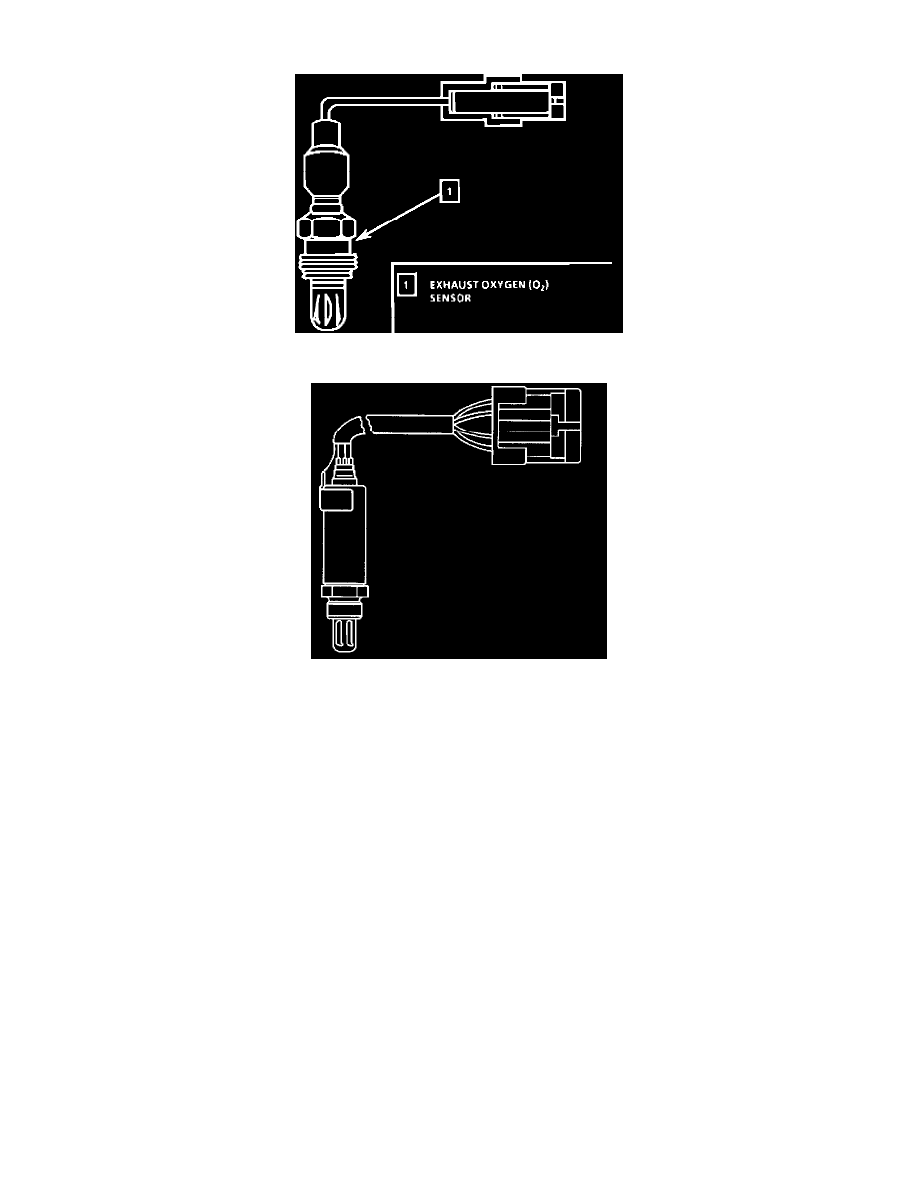G 2500 3/4 Ton Van V8-350 5.7L VIN K TBI (1995)

Oxygen Sensor: Description and Operation
Exhaust Oxygen Sensor (02)
The Heated Oxygen Sensor (HO2S) and Oxygen Sensor (02S) is essentially a small variable battery; it has the ability to produce a low voltage
signal that feeds information on engine exhaust oxygen content to the control module.
The Heated Oxygen Sensor (HO2S) and Oxygen Sensor (O2S) is constructed from a zirconia / platinum electrolytic element. Zirconia is an
electrolyte that conducts electricity under certain chemical conditions.
The element is made of a ceramic material and is an insulator when cold. At operating temperature, 315°C (600°F), the element becomes a
semiconductor. A platinum coating on the outer surface of the element stimulates further combustion of the exhaust gases right at the surface and
this helps keep the element up to the desired temperature. Also a heating element is incorporated into the sensor to aid in warm up to the operating
temperature and also to maintain that temperature. The Heated Oxygen Sensor (HO2S) has an inner cavity which is supplied with atmospheric
(reference) air from the sensor wires. The atmosphere has approximately 21% oxygen in it. In the electrical circuit this inner cavity is the positive
(+) terminal. The outer surface of the element is exposed to the exhaust gas stream. It is the negative (-) or ground terminal.
If the heated oxygen sensor pigtail wiring connector or terminal is damaged, the entire oxygen sensor assembly must be replaced. Do not attempt
to repair the wiring, connector or terminals. In order for the sensor to function properly, it must have provided to it a clean air reference. This clean
air reference is obtained by way of the oxygen sensor signal and heater wires. Any attempt to repair the wires, connectors or terminals could result
in the obstruction of the air reference and degraded oxygen sensor performance.
Due to the electrolytic properties of the element, the oxygen concentration differences between the reference air and exhaust gases produce small
voltages.
A rich exhaust (excessive fuel) has almost no oxygen. When there is a large difference in the amount of oxygen touching the inside and outside
surfaces, there is more conduction, and the sensor puts out a voltage signal above 0.6 volt (600 mV). With lean exhaust (excessive oxygen) there is
about two percent oxygen in the exhaust.
This is a smaller difference in oxygen from the outside surfaces which results in less conduction and a voltage signal below 0.3 volt (300 mV). The
voltages are monitored and used by the control module to "fine tune" the air / fuel ratio to achieve the ideal mixture desired.
The control module puts out a reference signal of 0.45 volt (450 mV). The reference signal serves two purposes. The first is to run the engine
when it is in "Open Loop" mode of operation. When the air / fuel ratio is correct the control module "senses" 450 mV. When the engine is
operating with a rich air / fuel ratio there is a reduction of free oxygen in the exhaust stream and the oxygen sensor voltage rises above the
reference voltage.
When the engine is running lean the voltage drops below the reference voltage due to excess oxygen in the exhaust stream. The oxygen sensor
provides the feedback information for the "Closed Loop" operating mode of the fuel delivery system. The oxygen sensor indicates to the control
